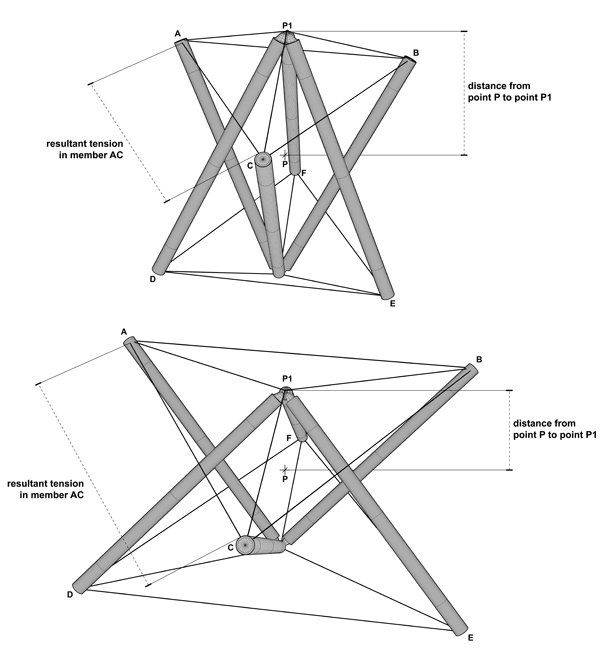Adaptive Tensegrity

This is a digital model that I created after reading Tristan d'Estree Sterk's essay on actuated tensegrity systems. I've rigged the system to work just like his actuated tensegrity system, so that as the actuator in the middle contracts, the tension members become more rigid, thus making the entire system stronger. The actuated system is one way to create a responsive tensegrity system that can adapt to changing environmental conditions to make a "learning" structure... however you could eliminate the actuator by making the tension members able to expand and contract, much like a muscle. I plan on persuing this line of thought for a future skyscraper, but as yet, is still in a hypothetical stage.
Download Tensegrity Module.zip
Note: This software and its documents are in the public domain and are furnished "as is". The author, Andrew Payne, makes no warranty, expressed or implied, as to the usefulness of the software and documentation for any purpose. This work is licensed under a Creative Commons Attribution-Share Alike 3.0 United States License. http://creativecommons.org/licenses/by-sa/3.0/us/
![[LIFT] architects](/storage/layout/Header_025.png)

Reader Comments (3)
Wow this is great! I've been looking everywhere on how to build a tensegrity like structure in 3dsmax. This might seem like a basic question for you, but how do you connect the lines and the poles in such a way that allows them to move dependently with each other? I know how busy you are, but could you point me in the right direction so I can learn how its done? Thanks!
I first link the struts up to a slider helper, using wired parameters, so I can move the slider to the left and right, and control the rotation and vertical movement of the struts. Once I rig that up, I create a spline that connects the endpoints of each strut to the apex point. By using a Spline IK modifier on the spline, I can create point helpers at each strut endpoint, and then link those point helpers to the struts themselves. Then, when the struts move, the point helpers move along with them, and consequentially, the spline as well. It's not all that complicated, but I might not be explaining the process very clearly.
Thanks for the prompt reply! You just introduced me to the world of wired parameters. Most interesting. Do you think its possible to make a model like the real life one you built, by using wire parameters?